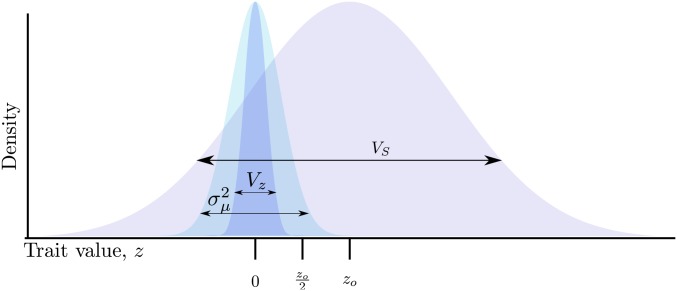Figure 1.
Schematic of the model. A Wright–Fisher population evolves to equilibrium around an optimum trait under Gaussian stabilizing selection with mean zero, where the parameter represents the intensity of selection against extreme trait values . At equilibrium, the mean trait value is and the genetic variance equals the phenotypic variance . Mutations arise at a constant rate with effect sizes, γ, drawn from a Gaussian distribution with mean zero and variance . The optimum then shifts to , such that . During adaptation, approaches due to allele frequency change and new mutations. At any point during adaptation, mutations with effect sizes will overshoot the optimum if they reach high frequency or fix.

